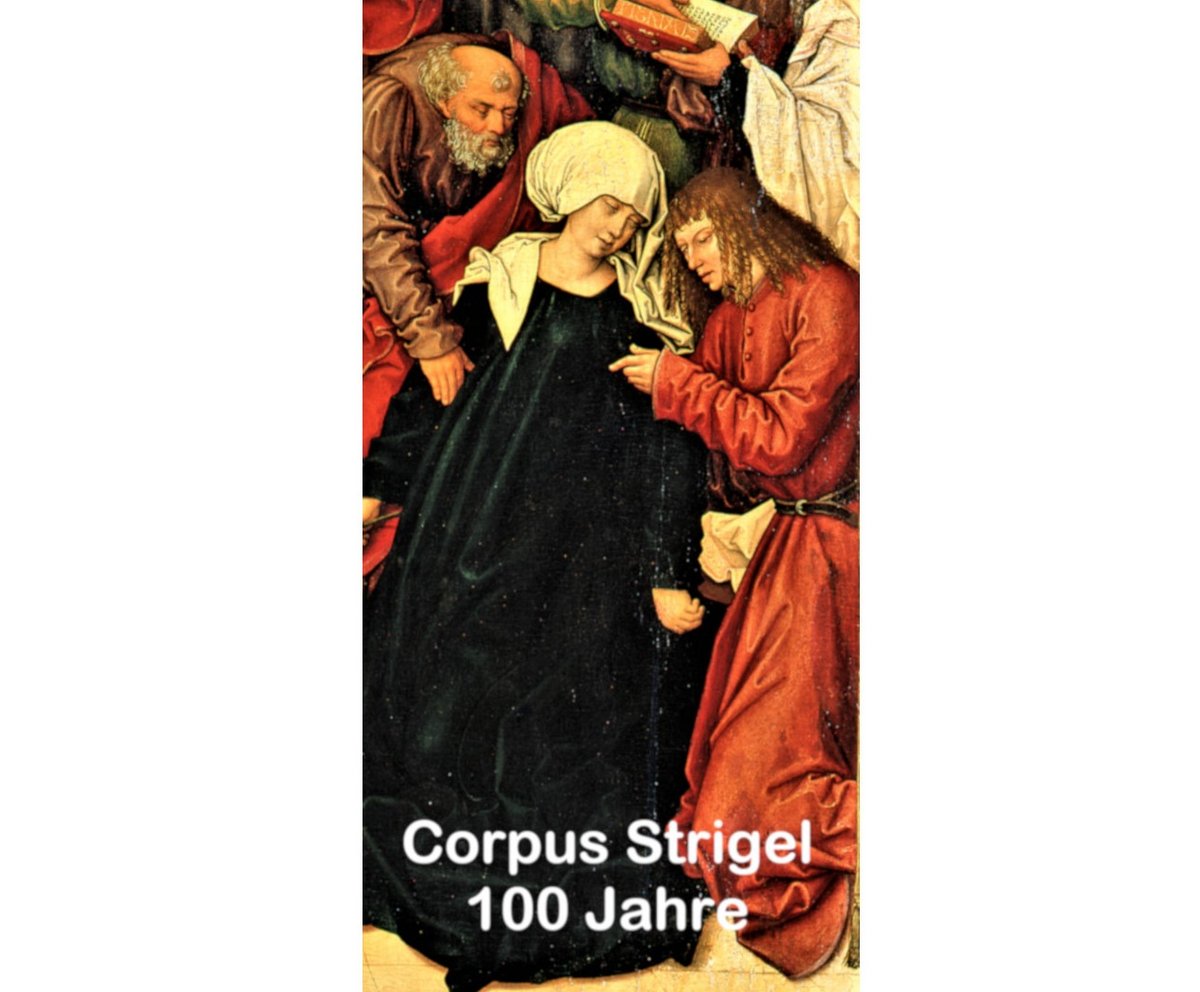Project “100 Years of Corpus Strigel”
The Research and Image Database of all Works of the Strigel Family and their Workshop in Memmingen (1430–1530)
Thematic framework:
The Strigels were a family of artists in Memmingen (Upper Swabia) who – for over 100 years and across three generations – were a highly productive kinsfolk of painters and woodcarvers, whose works with their religious motifs attracted not only many local customers but were also exported as far afield as Austria, Italy and Switzerland, respectively Grisons. Still today, the Swiss canton of Grisons is home to an extraordinary wealth of well-preserved altarpieces from what was evidently the most creative period of the workshop under the direction of Ivo Strigel.
Alongside Augsburg, Konstanz, Überlingen and Hall, the former free imperial city of Memmingen had risen to become one of the most important trading places in southern Germany, where the Strigel family could run its workshop with more or less no restrictions or significant competition. In Swabia’s late Gothic art trade, their business was the dominant artistic hub in the city and the surrounding area.
The painter Hans Strigel the Elder (*around 1400 in Memmingen (?)–March/June 1462 ibid.) is considered the founding father of this workshop. With his wife Anna, he had six children (sons Petrus, Ivo and Hans and daughters Anna, Ursula and Agatha), of whom Ivo (*1430/31 Memmingen–17.8.1516 ibid.), presumably with his brother, the painter Hans Strigel the Younger (in Memmingen around 1450–around 1485 ibid.), took over the workshop after the death of their father and turned it into a flourishing business. It remains unclear up until today whether Ivo was only a painter or a woodcarver too. It can, however, be assumed that he was a member of both guilds, especially considering that the workshop was keen and able to offer both trades. In view of the well-preserved inventory of altarpieces in Grisons, it is evident that Ivo – because of particularly full order books also typical for that period – hired various craftsmen, both painters and woodcarvers, from other towns and regions in order to keep up with his commissions.
Bernhard Strigel, referred to in older research literature as the Master of the Hirscher Collection, is the last scion of this artistic dynasty (*Memmingen 1460–ibid. 1528). He received his first training in his father’s workshop, as can also be seen from his early work. Working predominantly in Memmingen, jobs for the bigger churches and monasteries in Swabia (Ottobeuren, Schussenried, Isny, Buxheim, Salem, etc.) notably increased after the major commission for the monastery church of the Benedictine Order in Blaubeuren (1493/94). However, Bernhard became equally successful as a portrait painter when he – presumably on the recommendation of Johannes Cuspinians – entered the service of Emperor Maximilian and produced various types of portrait for him. He soon became a sought-after portraitist, not only in the imperial household and among the nobility (he also refers to himself as “Court Painter to Emperor Maximilian” in an inscription dated 1520) but also among bourgeois patricians.
Schooled entirely in the late Gothic tradition, Bernhard Strigel – especially through his portrait painting – was at the threshold to the modern era. As the youngest and last painter in his family, he developed, with new expressiveness and a wider understanding of composition and presentation principles, into one of the most important artists of the Renaissance, not only in Swabia.
Objective of the project “100 Years of Corpus Strigel”
Since the publication of Gertrud Otto’s and Edeltraud Rettich’s fundamental research in the 1960s, which is still valid today, no attempt has ever again been undertaken to review and make accessible this extraordinarily extensive inventory in compliance with today’s scientific standards, despite numerous and also sound individual studies. The number of works that must now be seen in conjunction with the Memmingen Workshop has meanwhile almost doubled.
The time for revisiting and exploring the work of this important family of artists is ripe.
After many years of research work on old German panel painting (1350–1550), but especially after the project funded by the German Research Foundation (DFG) on the high altarpieces of the former monastery church of the Benedictine Order in Blaubeuren (2003), associated with the State Museum of Württemberg, and research work (2014–2017) on Hans Maler von Ulm, Maler zu Schwaz, who worked in Ulm and Memmingen, Dr Anna Moraht-Fromm (Kultur- und Bildwissenschaft – Sachverständige, Berlin) has developed a concept for a database project aimed at the digital documentation of the complete works of the Strigel family. In the framework of her Internship Project II, Lisa Braun will examine the Grisons altarpieces from Ivo Strigel’s workshop and, through her contribution, help to develop the database further.
The vast amount of material, already generated simply from documenting the objective facts, will be individually indexed with keywords and allow completely new questions about this late Gothic workshop active over three generations.

